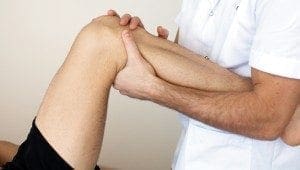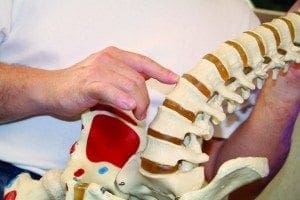Years ago, arthritis was considered an inherent part of the aging process and a signal to a patient that it’s time to slow down, but not so anymore. Recent research and clinical findings show that there is much more to life for arthritis patients than the traditional recommendation of bed rest and drug therapy.
What Is Arthritis?
The word “arthritis” means “joint inflammation” and is often used in reference to rheumatic diseases. Rheumatic diseases include more than 100 conditions, including gout, fibromyalgia, osteoarthritis, psoriatic arthritis, and many more. Rheumatoid arthritis is also a rheumatic disease, affecting about 1 percent of the population. Although rheumatoid arthritis often begins in middle age and is more frequent in the older generation, it can also start at a young age.
Arthritis may be divided into two types – degenerative and inflammatory. DEGENERATIVE or OSTEOARTHRITIS is the commonest form, sometimes called ‘wear and tear’ and is usually localised to a specific site such as the hips, knees or spine. Its classic features of pain, stiffness and restricted mobility may often be eased and improved with skilled physiotherapy treatment.
Physiotherapy for people with arthritis is aimed at:
- Reduction of pain and swelling
- Promote range of joint movement
- Improve mobility
- Strengthen muscle power
- Assist in rehabilitation after surgery such as hip replacement
- Educate on how you can improve your quality of life through exercise
Treatments may include:
Manual therapy Mobilisation and manipulation techniques are passive movements applied to a joint or soft tissue by the physio in a specific manner to help restore full movement to a joint that is painful and restricted. Manual therapy is often useful in the chronic forms of arthritis and is often successful when other methods such as heat and exercises have given little or no relief.
Electrical treatments (electrotherapy) These treatments produce electrical stimulation of your body tissues. They may be extremely useful in the treatment of both acute and chronic arthritis, where pain, swelling and muscle spasms are present.
Exercise A balanced programme of rest and exercise, and careful attention to joint posture is an important part of pain management, joint protection and maintenance of your joint function. Controlled exercise helps lessen pain and stiffness and improves the strength of muscles and ligaments, so helping to stabilise joints. This is essential in all aspects of self-care and particularly important before and after joint surgery.
Thermal (heat treatments) The application can be directed towards superficial or deeper parts of the body. The most common types of treatment used are infra-red radiation, hot packs for superficial treatments, and microwave diathermy and shortwave diathermy for deep heating treatment.
Self-Management Individuals who participate in self-management programs notice decrease in joint pain and frequency of arthritis-related doctors’ visits, increases in physical activity and overall improvement in quality of life.
Hydrotherapy is a very useful means of exercising arthritic joints using the buoyancy of water to assist or resist movement. The warmth of the water increases the circulation and helps reduce muscle spasms, producing more effective movement.
Joint Pain & Arthritis
Arthritis is a major cause of disability and handicap in Australia affecting people of all ages and walks of life. Arthritis is not a single condition.
Arthritis literally means inflammation of the joint.
There are over 150 kinds of arthritis, all of which affect one or more joints in the body. The most common types of arthritis are:
- (OA) Osteoarthritis
- (RA) Rheumatoid arthritis
- Fibromyalgia
- Lupus
- Septic arthritis
- (JIA) Juvenile idiopathic arthritis
- Gout, which account for 90% of all arthritis cases.
One in one thousand children are diagnosed with juvenile arthritis, while it is estimated that three in every thousand children live with the condition but remained undiagnosed.
Arthritis is often misinterpreted as simply a disease which affects elderly people, when in fact 60% of those who are diagnosed with arthritis are between the ages of 15 – 60 years.
Arthritis affects 3.4 million Australians, 16.7% of the population. Of the proportion of Australians affected, 60.4% are women. 60% of all people living with arthritis are of working age.
What are the causes of arthritis?
Due to the fact that there are over 150 different types of arthritis, there is no one single cause or list of causes for arthritis. Often several factors contribute to an individual developing this common problem.
Types of Arthritis
Arthritis causes pain, loss of movement and sometimes swelling. This disease also can affect other parts of the body.
Some types of arthritis are:
- Osteoarthritis, is the most prevalent form of arthritis.Osteoarthritis is a disease that affects joints in the body and is characterised by damage to the surface of the joint. The main symptoms are pain, and sometimes mild stiffness. The condition is sometimes referred to as osteoarthrosis, arthosis or degenerative joint disease. The cartilage that covers the ends of bones in the joint deteriorates, causing pain and loss of movement as the bone begins to rub against bone.
- Rheumatoid arthritis, is one of the most serious and disabling types oaffecting mostly women. Rheumatoid arthritis, is an autoimmune disease in which the joint lining becomes inflamed as part of the bodys immune system activity, symptoms such as pain and swelling in the joints and stiffness in the mornings may occur.
- Gout, is often said to be the most painful of all the rheumatic diseases, Although it can’t be cured, it can be successfully treated. Gout can affect men of any age. Women rarely develop it before the menopause, but may do so as they age. So, with people living longer, there are more women with gout than previously. A tendency to attacks of gout may be inherited from a parent or a grandparent.
- People get gout because there is something unusual about the chemical processes that take place within the body. A substance called urate builds up as crystals in the joints, especially the big toe. Fortunately, gout almost always can be completely controlled with medication and changes in diet.
- Ankylosing spondylitis, is an inflammatory condition that affects the joints of the spine. Spondylitis simply means, inflammation of the spine. As the inflammation dies down, new bone forms replacing the more flexible tendons and ligaments between the vertebrae. Eventually the individual bones of the spine may link up (fuse) resulting in stiffness of the spine (ankylosis).
- Juvenile arthritis, a general term for all types of arthritis that occur in children. Most children won’t have lasting problems from childhood arthritis. JIA doesn’t turn into rheumotoid arthritis in adulthood. And having juvenile idiopathic arthritis doesn’t mean that your child will go on to develop adult forms of arthritis.
- Systemic lupus erythematosus (lupus), a serious disorder that can inflame and damage joints and other connective tissues throughout the body.
- Scleroderma, a disease of the body’s connective tissue that causes a thickening and hardening of the skin.
- Fibromyalgia, is a long term (chronic) condition that can cause widespread muscle pain. There aren’t usually any outward signs of fibromyalgia, but the pain and tiredness associated with this illness are very real, in which widespread pain affects the muscles and attachments to the bone. It affects mostly women.
Preventing Arthritis

As the specific causes of the different types of arthritis remains unclear, it is difficult to say what may assist in the prevention of the development of arthritis. However, listed below are a few steps which may be beneficial in reducing the effects of arthritis.
- Maintain appropriate weight.
- Protect joints from overuse and injuries.
- Regularly exercise to maintain healthy bones, muscles and joints. Obviously, regular chiropractic, physiotherapy or massage care is of benefit too, ensuring optimal spinal/joint range of movement and flexibility.
- Eat a healthy diet as nutrients are vital for joint health.
- Hydrate your body. Water makes up 70 percent of the cartilage in joints and plays a major role in the lubrication and shock absorbing properties of healthy joints.
Arthritis and Food
When it comes to specific foods you should eat, an anti-inflammatory diet involves avoiding foods that make inflammation worse and eating plenty of foods that reduce inflammation. These foods all help to reduce some aspect of inflammation include:
- Omega-3 fatty acids Salmon, herring, mackerel (not king), sardines, anchovies, rainbow trout, oysters, eggs, flaxseed (ground & oil) and walnuts.
- Extra-virgin olive oil Use olive oil when cooking.
- Antioxidants May help prevent arthritis, slow its progression & relieve pain.
- Vitamin C Guava, sweet peppers, oranges, grapefruit, strawberries, pineapple, lemons, broccoli, kale, brussels sprouts, kidney beans, cauliflower, red cabbage, mangos.
- Selenium Brazil nuts, tuna, crab, oysters, pasta (whole-wheat), lean beef, cod, whole grains, turkey & wheat germ.
- Carotenes Sweet potato, carrots, kale, butternut squash, turnip greens, pumpkin, mustard greens, red pepper, apricots and spinach.


